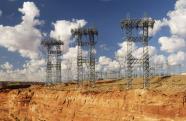Googling the Transmission Quagmire
Why new partnerships may be key

Constraining transmission hits consumers the hardest. It’s constricts supplies, which causes the price for all goods and services to rise. But despite that reality, getting new wires built is probably the most onerous task a utility faces.
Selling new transmission is a hard case to make. But the argument must be made. What’s needed? Depends on whom is asked, although it could involve the formation of new partnerships -- businesses that are able to think outside existing paradigms.
Indeed, the independent transmission owners say that they are central to that school of thought, noting that they are appealing to regulators because they do not own any generation and will allow all suppliers access to the lines. The model has even attracted Google, which wants to see more wind power developed.
“Utility transmission should be spun off,” says Joe Welch, chief executive of ITC Holdings, at the EnergyBiz Leadership Forum. “Vertical integration is an impediment to regional transmission that results in a patchwork system that is not designed to work together.” That impedes commerce, he adds.
The regulated utilities say that it is their customers who have paid to build those lines and it is those customers whose rates are used to maintain them. Therefore, it is their foremost duty to service their territories. As such, selling the lines is not a viable option for most.
Integrated utilities, of course, are comprised of generation, transmission and distribution assets. Transmission is the smallest component of that that mix and often presents the most risk, as evidenced by the 2003 blackout. At the same time, the pressure is on power companies to join regional transmission organizations whereby they would give up operational control of their assets to third parties who act essentially as traffic cops.
The Federal Energy Regulatory Commission had intended for utilities to give up operational control of their transmission properties to independent system operators when it enacted open access rules in 1999. Without that control, transmission assets would no longer fall within the structure of a vertically-integrated utility. That diminishes their financial significance, particularly if utilities can get a good price for the assets.
Who best to lead?
Transmission systems will continue to be regulated, making the investments less attractive to risk-takers and more appealing to third party transmission owners or infrastructure funds. Those independent owners say that utilities could, generally, fetch about two-times the book value for those assets.
KKR and Trimaran Corp. purchased DTE Corp.'s 3,000 mile transmission system in 2003 for about $610 million -- money DTE used to buy coal-fired power plants and pipelines as well as reduce debt. KKR and Trimaran's investment has since evolved into ITC Holdings. ITC, meantime, also paid $750 million for Alliant Energy’s system, which runs 6,800 miles through Illinois, Iowa and Minnesota.
It all points to the need to come up with viable ways to build new transmission. That's because the North American Electric Reliability Corp. is predicting that in the next 10 years new generation supplies could grow by 21 percent while the transmission assets would rise by only 10 percent.
To help get there, the Federal Energy Regulatory Commission is trying to entice investors to move cash into transmission by allowing returns from 12.5 percent to 14.3 percent. That policy change has led to an upsurge in transmission investment—an amount that the U.S. Department of Energy says will be $8 billion annually for the next couple years.
“We are trying to set up a regulatory construct to allow competition and fair cost allocation,” says Jon Wellinghoff, chair of FERC, at the conference.
But what type of business organization is best able to lead this charge? If utilities begin to feel as if the risks of owning transmission is too high or that they are hampering their overall growth, they may become more open to selling their wires to independent businesses.
Some utilities have bought into that logic. The vast majority have not. But Trans-Elect, which has purchased three such networks and which is now working with Google and others to build a gigantic off-shore wind project in the Atlantic, says that the only way to form an expanded and seamless grid is to eliminate “self interest” and to “think outside the box.”
“It’s about getting an innovative company like Google to look at these issues,” Robert Mitchell, chief executive of Trans-Elect told the EnergyBiz audience.
The overriding issue remains the building of smarter transmission to facilitate American enterprise. The job will be burdensome under any circumstance, although 21st Century partnerships may ease the path.
EnergyBiz Insider has been named Honorable Mention for Best Online Column by Media Industry News, MIN.
So what do you think? Please share your thoughts by posting a quick comment below, or by sending a longer reply to energybizinsider@energycentral.com.
Follow Ken on www.twitter.com/freehand1200
Copyright © 1996-2010 by CyberTech, Inc. All rights reserved.
To subscribe or visit go to: http://www.energycentral.com
To subscribe or visit go to: http://www.energybiz.com